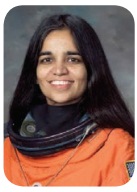Science : Chapter 8 : Universe and Space Science
TEXTBOOK EXERCISES
I. Choose the best answer.
1. Which of the following is a celestial body?
a) Sun
b) Moon
c) Stars
d) All the above
[Answer: (d) All the above]
2. Mangalyaan was sent to ________
a) Moon
b) Mars
c) Venus
d) Mercury
[Answer: (b) Mars]
3. Chandrayaan – 1 was launched on
a) 22nd October 2008
b) 8th November 2008
c) 22nd July 2019
d) 22nd October 2019
[Answer: (a) 22nd October 2008]
4. ________ is called as Red planet.
a) Mercury
b) Venus
c) Earth
d) Mars
[Answer: (d) Mars]
5. Which of the following is the working principle of Rockets?
a) Newton’s first law
b) Newton’s second law
c) Newton’s third law
d) All the above
[Answer: (c) Newton’s third law]
6. Cryogenic fuels are stored at
a) room temperature
b) low temperature
c) very low temperature
d) very high temperature
[Answer: (c) very low temperature]
7. ________ was the first manned mission of NASA to go to the moon.
a) Apollo-5
b) Apollo-8
c) Apollo-10
d) Apollo-11
[Answer: (b) Apollo-8]
II. Fill in the blanks.
1. The study about stars and planets are known as Astronomy.
2. Our sun belongs to Milky way Galaxy.
3. Mars revolves around the Sun once in 687 days.
4. Mars Orbiter Mission is India’s first interplanetary mission.
5. Neil Armstrong was the first man to walk on the surface of the Moon.
III. Say true or false. If false, correct the statement.
1. The Sun and the celestial bodies form Solar system. [Answer: True.]
2. Chandrayaan-1 was launched from Sriharikota. [Answer: True.]
3. Mars is the smallest planet in the Solar system. [Answer: False.]
Correct statement: Mercury is the smallest planet in the Solar system.
4. PSLV and GSLV are India’s popular satellites. [Answer: True.]
5. The propellant of a rocket is only in the form of solids. [Answer: False.]
Correct statement: The propellant of a rocket is may be in the form of solids or liquids.
IV. Match the following.
1. Chandrayaan – Fuel
2. Mangalyaan – Moon
3. Cryogenic – First manned mission to the moon
4. Apollo 8 – First man landing mission to the moon
5. Apollo 11 -Mars
Answer:
1. Chandrayaan – Moon
2. Mangalyaan – Mars
3. Cryogenic – Fuel
4. Apple – 8 – First manned mission to the moon
5. Apollo – 11- First man landing mission to the moon
V. Answer briefly.
1. What are celestial objects?
Answer: The stars, the planets, the Moon and any other objects like asteroids and comets in the sky are called celestial objects.
2. Define galaxy.
Answer: A collection of billions of stars held together by mutual attraction is called galaxy.
3. What are the objectives of Chandrayaan -1?
Answer:
(i) To find the possibility of water on the Moon.
(ii) To find the elements of matter on the Moon.
(iii) To search for the existence of Helium-3.
(iv) To make a 3-dimensional atlas of the Moon.
(v) To study about the evolution of the solar system.
4. List out the objectives of Mangalyaan.
Answer:
(i) To develop the technology required for interplanetary mission.
(ii) To explore the surface of Mars.
(iii) To study the constituents of the Martian atmosphere.
(iv) To provide information about the future possibility of life and past existence of life on the planet.
5. What are Cryogenic Fuels?
Answer: Cryogenic fuels are the fuels used in rocket engine. They are maintained or stored at very low temperature in order to keep them in liquid state.
6. Name the Indians worked at NASA.
Answer: Kalpana Chawla and Sunitha Williams.
VI. Answer in detail.
1. What are the achievements of Chandrayaan – 1?
Answer:
(i) The discovery of presence of water molecules in the lunar soil.
(ii) Chandrayaan-1 confirmed that the Moon was completely molten once.
(iii) Chandrayaan-1 has recorded images of the landing site of the US space-craft Apollo-15 and Apollo-11.
(iv) It has provided high-resolution spectral data on the mineralogy of the Moon.
(v) The existence of aluminium, magnesium and silicon were picked up by the X-ray camera.
(vi) More than 40,000 images have been transmitted by the Chandrayaan-1 camera in 75 days.
(vii) The acquired images of peaks and craters show that the Moon mostly consists of craters,
(viii) Chandrayaan-1 beamed back its first images of the Earth in its entirety.
(ix) Chandrayaan-1 has discovered large caves on the lunar surface that can act as human shelter on the Moon.
2. Explain the parts of a rocket.
Answer: There are four major parts or systems in a rocket. They are:
(i) Structural system
(ii) Payload system.
(iii) Guidance system.
(iv) Propulsion system.
(i) Structural system (Frame): It is the frame that covers the rocket. It is made up of very strong but light weight materials like titanium or aluminum. Fins are attached to some rockets at the bottom of the frame to provide stability during the flight.
(ii) Payload system : It is the object that the satellite is carrying into the orbit. Payload depends on the rocket’s mission. The rockets are modified to launch satellites with a wide range of missions like communications, weather monitoring, spying, planetary exploration, and as observatories. Special rockets are also developed to launch people into the Earth’s orbit and onto the surface of the Moon.
(iii) Guidance system : Guidance system guides the rocket in its path. It may include sensors, on-board computers, radars, and communication equipments.
(iv) Propulsion system : It takes up most of the space in a rocket. It consists of fuel (propellant) tanks, pumps and a combustion chamber. There are two main types of propulsion systems. They are: liquid propulsion system and solid propulsion system.
3. Write a note on Apollo missions.
Answer:
(i) Apollo Missions are the most popular missions of NASA.
(ii) These missions made American Astronauts to land on the Moon.
(iii) It consists of totally 17 missions.
(iv) Among them Apollo -8 and Apollo-11 are more remarkable.
(v) Apollo-8 was the first manned mission to go to the Moon. It orbited around the Moon and came back to the Earth.
(vi) Apollo-11 was the first ‘Man Landing Mission’ to the moon. It landed on the Moon on 20th July 1969.
(vii) Neil Armstrong was the first man to walk on the surface of the Moon.
VII. Higher Order Thinking Questions.
1. We always see one side of the Moon. Why?
Answer: Moon doesn’t have its own light, but it reflects the sunlight. The time period of rotation of the Moon about its own axis is equal to the time period of revolution around the Earth. That’s why we are always seeing its one side.
Student Activities
Activity 1
Make a model of a rocket using the low cost materials available to you. Also prepare an album of the rockets launched by India.
Activity 2
Take a balloon and blow air into it. Now let the air inside the balloon to come out. What do you observe? You can see the balloon moving in a direction opposite to the direction of the air. Rocket also moves almost similar to this.
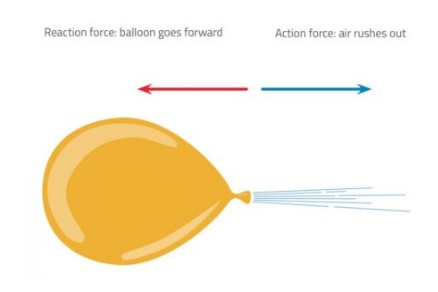
Activity 3
With the help of your teacher gather information about the achievements of India in space research. Prepare an album about the satellite programmes of India.
Activity 4
Gather information about the planets in the solar system. Can we reach all the planets in the solar system? Discuss in the class room.
Activity 5
Visit a library and gather more information about the achievements of Kalpana Chawla. Discuss why Kalpana Chawla is an inspiration to all of us.Rockets were invented in China, more than 800 years ago. The first rockets were a cardboard tube packed with gunpowder. They were called fire arrows. In 1232 AD, the Chinese used these ‘fire arrows’ to defeat the invading Mongol army. The knowledge of making rockets soon spread to the Middle East and Europe, where they were used as weapons.
Polar Satellite Launch Vehicl (PSLV) and Geosynchronous Satellite Launch Vehicle (GSLV) rockets are India’s popular rockets.
Rakesh Sharma, an Indian pilot from Punjab was selected as a ‘Cosmonaut’ in a joint space program between India and Soviet Russia and become the first Indian to enter into the space on 2nd April, 1984.
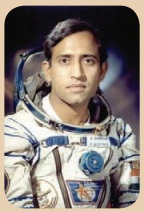
Kalam Sat is the world’s smallest satellite weighing only 64 gram. It was built by a team of high school students, led by Rifath Sharook, an 18 year old school student from ‘Pallapatti’ nearKarur, Tamil Nadu. It was launched into the space on 22nd June 2017 by NASA.
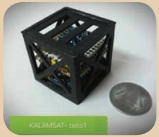
More to know
Mars is the fourth planet from the Sun. It is the second smallest planet in the solar system. Mars is called as the Red Planet because of its reddish colour. Iron Oxide present in its surface and also in its dusty atmosphere gives the reddish colour to that planet. Mars rotates about its own axis once in 24 hours 37 minutes. Mars revolves around the Sun once in 687 days. The rotational period and seasonal cycles of Mars are similar to that of the Earth. Astronomers are more curious in the exploration of Mars. So, they have sent many unmanned spacecrafts to study the planet’s surface, climate, and geology.
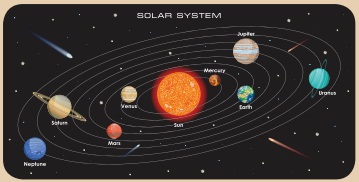
India became the first Asian country to reach Mars and the first nation in the world to achieve this in the first attempt. Soviet Space Program, NASA, and European Space Agency are the three other agencies that reached Mars before ISRO.
Know your Scientist Dr. Kailasa Vadivoo Sivan is the chairperson of the Indian Space Research Organization (ISRO). He was born in Sarakkalvilai, in Kanyakumari district of Tamil Nadu. Sivan graduated with a bachelor’s degree in Aeronautical Engineering from Madras Institute of Technology in 1980. Then he got his master’s degree in Aerospace Engineering from Indian Institute of Science, Bangalore in 1982, and started working in ISRO. He completed his doctoral degree in Aerospace Engineering from Indian Institute of Technology, Bombay in 2006. He was appointed as Chairman of ISRO from 10th January 2018. Sivan is popularly known as the ‘Rocket Man’ for his significant contribution to the development of cryogenic engines for India’s space programs. The ability of ‘ISRO’ to send 104 satellites in a single mission is a great example of his expertise.
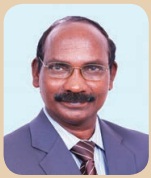
More to know
The Moon is the only natural satellite of the Earth. It is at a mean distance of about 3,84,400 km from the Earth. Its diameter is 3,474 km. It has no atmosphere of its own. It doesn’t have its own light, but it reflects the sunlight. The time period of rotation of the Moon about its own axis is equal to the time period of revolution around the Earth. That’s why we are always seeing its one side alone.
The members present in the crew during the Man Landing Mission were Neil Armstrong, Buzz Aldrin and Michael Collins.
Kalpana Chawla travelled over 10.4 million miles in 252 orbits of the earth, logging more than 372 hours in space.
